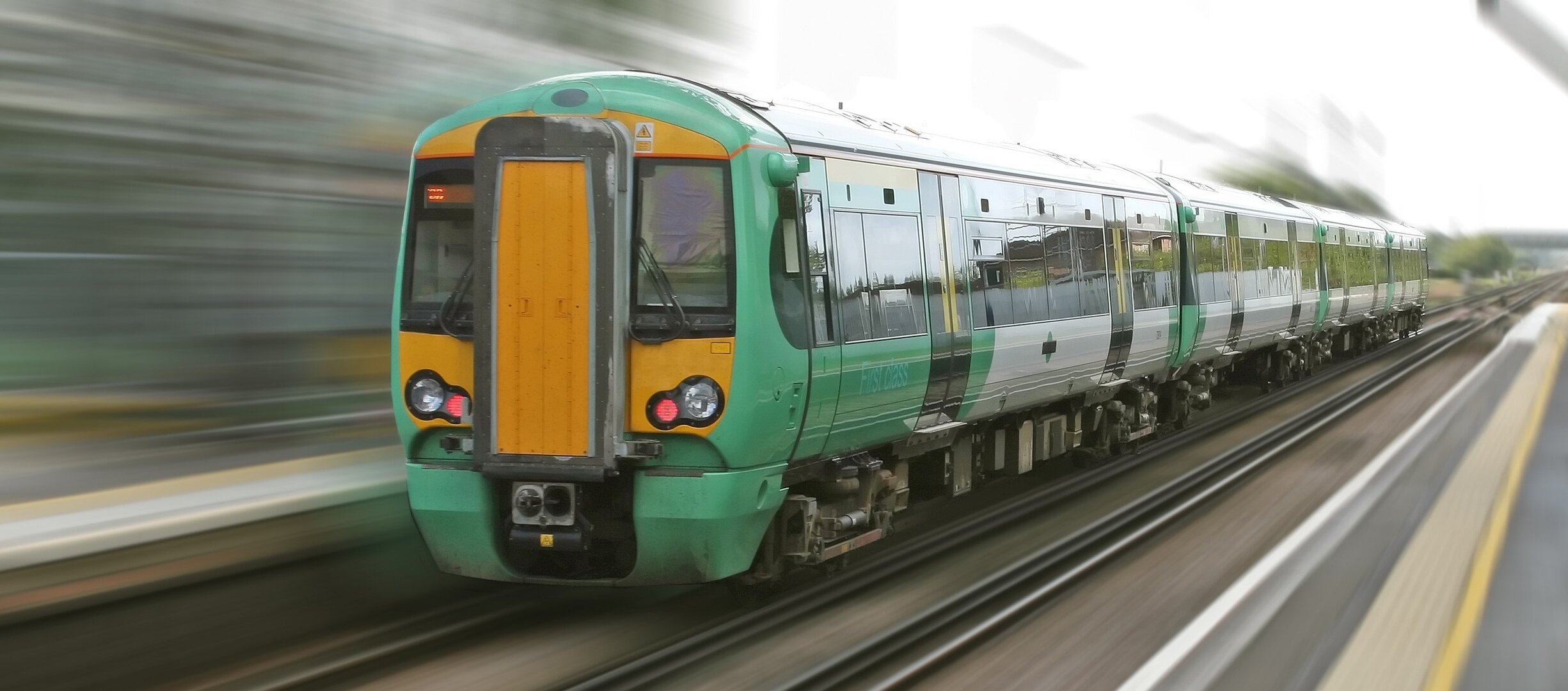Space-enabled connectivity on trains to boost green mobility
Train passengers in the UK will enjoy seamless, instant and reliable communications with their friends, families and colleagues thanks to integrated terrestrial and satellite networks.
This is set to help increase the number of people using Europe’s most sustainable form of motorised transport.
ESA, the UK Space Agency, and the British government’s Department for Digital, Culture, Media and Sport selected information technology firm CGI to develop a demonstration of converged telecommunications networks for use on trains.
This will show how constellations of telecommunications satellites can fill gaps in existing terrestrial coverage and provide additional capacity, putting an end to the patchy mobile coverage that many rail passengers experience.
Improved connectivity could help to boost passenger numbers and cut carbon emissions, supporting the ambition of reaching carbon neutrality by 2050.
During the project, CGI will work with information technology partners Icomera, Isotropic Systems and 5G3i, as well as Network Rail, and rail operators ScotRail, Northern and LNER.
The Satellites for Digitalisation of Railways (SODOR) project will deliver pilot demonstrations of improved network connectivity for train monitoring and passenger broadband in 2022.
Mike Rudd, Head of Telecommunications at the UK Space Agency, said: “Satellites play a vital role in keeping people connected, but they can also help keep us safe by providing reliable communications links between trains, drivers and operators. This new project is a great example of the National Space Strategy in action, drawing on CGI’s expertise in satellite communications and working closely with our partners in ESA to demonstrate how this technology could help supercharge mobile connectivity across the national rail network.”
UK Minister for Media, Data and Digital Infrastructure, Julia Lopez, said: “We want to end the frustration of cut-short calls and internet black-outs on trains and bring our network into the fast lane. We're delighted to select CGI to test how satellites and 5G can put an end to patchy mobile coverage while helping train operators monitor the safety and performance of their services with greater precision. This is just one of a long list of projects we are backing to boost our economy and improve people's lives with modern technology.”
Shaun Stretton, Senior Vice President for UK and Australia Space Control and Information Solutions at CGI, said: “In today’s world, consumers have come to rely on ubiquitous access to the internet and losing a mobile signal on a train journey is no longer an acceptable inconvenience. It also has commercial implications for the operator and, under some circumstances, could even present a safety issue for drivers. We are pleased to be working with ESA and the UK Government, along with a wide range of partners, to demonstrate how bringing together satellite communications and terrestrial networks will solve this. CGI is uniquely positioned to unlock these benefits through our experience and information technology capabilities across the space, telecoms and rail domains.”
John Finney, Chief Executive of Isotropic Systems, said: “We are excited to be part of a project that will significantly increase the attractiveness of rail travel compared to other modes. Isotropic Systems’ next-generation antenna will greatly improve the on-board experience for passengers and provide vital operational and safety improvements for operators. Our collaboration with ScotRail, Northern and LNER means that passengers across the UK will see the benefit, whether they are working from the carriage instead of the office or taking advantage of improved entertainment options, we hope this initiative will help facilitate a new era of mass rail transit.”
Rita Rinaldo, Head of Projects and Studies Implementation Division at ESA, said: “We trust that the SODOR project will demonstrate the unique contribution of 5G integrated satellite-terrestrial connectivity in providing good quality passenger communications for remote regions, solving the problems experienced today by many train users. Thanks to the support of Network Rail and other train operators, this will pave the way for a wider adoption of satellite communications for rail applications, including in the context of the future railway mobile communication system.”


